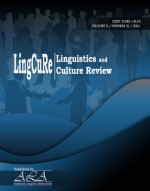From Hamlet to Holmes: literary detective tradition
Keywords:
detective stories, Doyle, Hamlet, Shakespeare, sherlock holmesAbstract
Exposed to the mystery of his father’s suspicious death, young Hamlet followed the riddle of solving it in the longest tragedy of Shakespeare. By suspension and the lengthy nature of detective works, Shakespeare seems to have initiated a new subgenre in drama which may have later on been converted into an independent subgenre in the novel by Edgar Allan Poe, Sir Arthur Conan Doyle, and Agatha Christie through their imaginative characters, Auguste Dupin, Sherlock Holmes and the pair of Hercules Poirot with Miss Marple respectively. Fyodor Dostoevsky may have also spread the net of Hamletian subtext in his Crime and Punishment. Plotting a perfect crime by the murderers and the public approval of the plan, on one hand, and the inconvincible mind of the hero which ultimately undo the seemingly unsolvable puzzle, on the other, construct the very core of all aforementioned works of Shakespeare, Poe, and Doyle. The unanticipated and unpredicted findings of either Holmes or Hamlet defeat the expectations of the audience and bring the runaway justice back to her groom.
Downloads
References
Austen, J. (1813). Pride and Prejudice: A Novel in Three Volumes (Vol. 3). T. Egerton.
Behn, A. (1998). Oroonoko, and other writings. Oxford University Press, USA.
Brontë, C. (2001). Jane Eyre (1847) . Lulu. com.
Brown, J. R. (1963). Shakespeare's Subtext: II. The Tulane Drama Review, 8(2), 85-102.
Clipper-Sethi, R. (1983). A Lesson for Novelists; or, The Dramatic Structure of Eugene Onegin. Russian Literature, 14(4), 397-411. https://doi.org/10.1016/0304-3479(83)90005-4
Dostoyevsky, F. (2017). Crime and punishment. Oxford University Press.
Doyle, A. C. (1992). The adventures of sherlock holmes. Wordsworth Editions.
Doyle, A. C., & Hultenberg, H. (1960). A study in scarlet (p. 0). Braille Writers' Association of Victoria.
Dundar, S. (2013). Nine drama activities for foreign language classrooms: Benefits and challenges. Procedia-Social and Behavioral Sciences, 70, 1424-1431. https://doi.org/10.1016/j.sbspro.2013.01.206
Evans, R. C. (1999). Friendship in Hamlet. Comparative Drama, 33(1), 88-124.
Giles, J. (2012). Software decides the most influential Victorian novelists. https://doi.org/10.1016/S0262-4079(12)62060-0
Ginsburg, R. (1997, September). The Jewish Mother turned monster: Representations of motherhood by Hebrew women novelists 1881–1993. In Women's studies international forum (Vol. 20, No. 5-6, pp. 631-638). Pergamon. https://doi.org/10.1016/S0277-5395(97)00057-5
Goldman, A. H. (2011). The Appeal of the Mystery. The Journal of Aesthetics and Art Criticism, 69(3), 261-272.
Lavin, M. R. (1998). Comic books and graphic novels for libraries: What to buy. Serials review, 24(2), 31-45. https://doi.org/10.1016/S0098-7913(99)80117-8
Lim, S. (2012). Detective fiction, the police and secrecy in early twentieth century Siam. South East Asia Research, 20(1), 83-102.
Maddalena, C. J. (2009). The resolution of internal conflict through performing poetry. The Arts in Psychotherapy, 36(4), 222-230. https://doi.org/10.1016/j.aip.2009.04.001
Mann, P. H. (1983). The novel in British society. Poetics, 12(4-5), 435-448. https://doi.org/10.1016/0304-422X(83)90017-7
Neill, A. (2009). The Savage Genius of Sherlock Holmes. Victorian Literature and Culture, 37(2), 611-626.
Poe, E. A. (2006). The Murders in the Rue Morgue. 1841. New York: Modern Library.
Pratt, M. L. (1981). The short story: The long and the short of it. Poetics, 10(2-3), 175-194. https://doi.org/10.1016/0304-422X(81)90033-4
Qi, M. (2021). The role and status of drama in spiritual and material culture. Linguistics and Culture Review, 5(S2), 487-500. https://doi.org/10.37028/lingcure.v5nS2.1385
Saydazimova, U. T. (2021). Leading topics and ideas of new Korean poetry of the XX century. Linguistics and Culture Review, 5(S1), 969-977. https://doi.org/10.37028/lingcure.v5nS1.1481
Setlur, R., & Paul, D. (2021). Anaesthesia in Indian Detective Fiction; the curious case of Byomkesh Bakshi. Journal of Anesthesia History. https://doi.org/10.1016/j.janh.2021.03.002
Shakespeare, W. (2008). The tragedy of Hamlet, prince of Denmark (pp. 1-228). Yale University Press.
Shelley, M. W. (2018). Frankenstein: The 1818 Text. Penguin.
Smith, J. M. (1991). Hard-boiled detective fiction: Gendering the canon. Pacific Coast Philology, 78-84.
Steele, T. (1981). The Structure of the Detective Story: Classical or Modern?. Modern Fiction Studies, 27(4), 555-570.
Zuber, O. (1980). Problems of Propriety and Authenticity in Translating Modern Drama. The Languages of Theatre, 92-103. https://doi.org/10.1016/B978-0-08-025246-9.50014-5
Published
How to Cite
Issue
Section
Copyright (c) 2021 Linguistics and Culture Review

This work is licensed under a Creative Commons Attribution-NonCommercial-NoDerivatives 4.0 International License.














